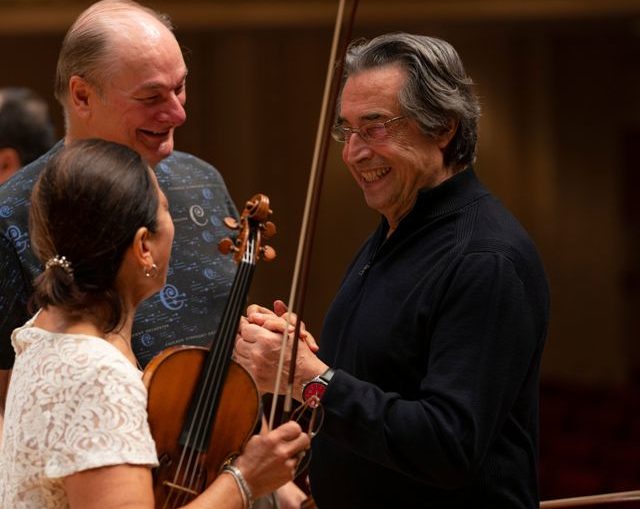
One can solely think about what the Viennese viewers thought on April 2, 1800, when the bold younger composer Beethoven, from the distant German metropolis of Bonn, organized a live performance on the Burgtheater subsequent to the Imperial Palace within the coronary heart of Vienna, to supply music of Haydn, Mozart, “and me!”
The card that Beethoven needed to play was his First Symphony, and the native newspaper chroniclers didn’t hassle to indicate.
One doubts the efficiency sounded as polished and realizing because it did on Thursday night time at Symphony Center, from the fingers of the Chicago Symphony Orchestra beneath the steerage of music director Riccardo Muti. But I’ll guess the Viennese musicians had been shocked and delighted by the First Sympnony’s rhythmic spring, intelligent harmonic twists, and droll handoffs at lickety split-speeds, like a sport of catch for aces.
That’s the form of musical writing that reveals respect for virtuosos, who get pleasure from a problem, by a composer who knew he was one in one million.
CST_ CST_ CST_ CST_ CST_ CST_ CST_ CST_
Surely Muti was providing an analogous problem to his Chicago musicians, and to his viewers, as he set the stage for a season-long CSO venture that can hint the trajectory of Beethoven’s 9 symphonies, spanning 24 years, by a composer who was already affected by ringing in his ears and could be 60 p.c deaf by 1801.
Beethoven was in reality fully deaf when he wrote many works inside his “mind’s ear” alone, together with the Ninth Symphony, which can culminate the present season in June with its choral “Ode to Joy.” Even after centuries, Beethoven’s symphonies stay formidable benchmarks. It is anticipated {that a} conductor and the instrumentalists not solely play them nicely, but in addition current them in a method that reveals new insights about their relationship to one another, and about Beethoven’s relationship to us.
Muti, who has carried out full Beethoven cycles with the Philadelphia Orchestra, the Vienna Philharmonic, and Milan’s La Scala Orchestra, marked the onset of the CSO’s venture with a considerate tactic. The live performance’s showpiece was the Third Symphony, the revolutionary “Eroica,” from 1805, which Muti placed on the second half. He arrange the “Eroica” by providing, on the primary half, two vastly totally different Beethoven works in similar key of C main — the very late “Consecration of the House” Overture from close to the time of the Ninth Symphony, after which the First from 1800.
The juxtaposition framed Beethoven’s journey: The ten-minute 1822 Overture, with its gobsmacking double fugue (the musical equal of two simultaneous horse races on the identical monitor) established for us simply the place Beethoven’s music was in the end headed. Then got here the fleet, effervescent First Symphony, from 20 years earlier, rhythmically vibrant but delivered with the heat of a realizing smile. It’s riddled with marvelously delicate interaction, particularly among the many winds, who delivered at an distinctive stage. Two of the orchestra’s lately appointed principal gamers — oboe William Welter and bassoon Keith Bunke — have fully settled in, sounding supremely poised as they completed one another’s phrases.
It’s no small factor for a brand new musician to regulate to the actual acoustics of Orchestra Hall, with its unforgiving resonance, the place it’s arduous to listen to one another on the stage and to gauge quantity. But even the latest principals — horn David Cooper, who began in July, and trumpet Esteban Batallán, who was sitting within the orchestra though he doesn’t formally begin till Sept. 30 — appeared to be settling into their groove because the “Eroica” wore on. In his tenth season, Muti has successfully re-stocked nearly all of the principal participant slots with a brand new era.